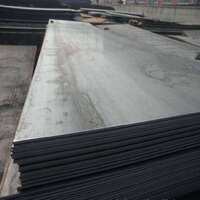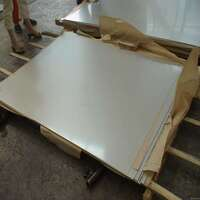1. Introduction
When you hear ‘metal clad,’ you might picture a sleek modern office with a shimmering steel facade or a rustic cabin wrapped in weathered corten steel siding. But metal clad isn’t just one thing—it’s a whole family of materials and systems used across architecture, engineering, and even electrical applications. From metal clad wall panels to standing seam metal siding and clad steel composites, the options are vast and varied. In this deep dive, we’ll break down seven major types of metal clad systems, compare their performance, and highlight where each shines. Whether you’re designing a metal clad house, sourcing clad metals for industrial use, or just curious about the metal clad meaning, this guide has you covered.

2. Understanding Clad Metal Meaning and Basics
Before we compare specific types, it’s essential to clarify what ‘clad metal‘ actually means. Clad metals are composite materials made by bonding two or more different metals together—typically a strong, inexpensive base metal (like carbon steel) with a corrosion-resistant or aesthetically pleasing outer layer (like stainless steel, copper, or titanium). This process can be done through roll bonding, explosion bonding, or electroplating. The result? A material that offers the best of both worlds: structural integrity plus surface performance. You’ll see this in everything from aluminum clad stainless steel piping to titanium clad plates used in aerospace.
3. Corten Steel Facade: Rust as a Feature, Not a Flaw

Corten steel—also known as weathering steel—is one of the most iconic metal clad options for exteriors. Unlike traditional steel that rusts and deteriorates, corten forms a stable, protective oxide layer that halts further corrosion. This gives it a rich, earthy patina that architects love. Corten steel siding is popular for modern metal clad buildings, especially in urban and industrial settings. However, it’s not without drawbacks. Corten siding cost can be high—often $8–$15 per square foot—and it’s not ideal for humid or coastal climates where the rust layer may not stabilize properly. Still, for a bold, low-maintenance steel facade, few materials match its character.
4. Zinc and Copper Cladding: Timeless Elegance with Natural Aging

Zinc facade systems and copper siding offer a softer, more refined look than steel. Zinc metal siding develops a subtle gray patina over time and is highly recyclable, making it a favorite for sustainable builds. A zinc clad roof or zinc clad dormer can last 80+ years with minimal upkeep. Copper, meanwhile, shifts from bright orange to deep green, adding historic charm—think old European rooftops. Both are more expensive than steel (zinc siding costs $10–$20/sq ft; copper can exceed $25/sq ft), but their longevity and aesthetic evolution justify the investment for high-end metal clad houses.
5. Aluminum and Colorbond Standing Seam Systems
For lightweight, corrosion-resistant cladding, aluminum clad sheet and aluminum clad steel dominate residential and commercial projects. Vertical standing seam metal siding—especially Colorbond standing seam or PAC Clad HWP systems—offers clean lines, excellent weather resistance, and a wide range of colors. Aluminum is also used in PAC Clad column covers, coping, and even aluminum clad pipe insulation. Compared to steel, it won’t rust and is easier to install. However, it’s softer and more prone to denting. Still, for a modern metal weatherboard look or a sleek standing seam facade, aluminum-based systems are hard to beat.
6. Corrugated and Industrial Steel Cladding
Exterior corrugated metal siding remains a go-to for sheds, warehouses, and even trendy metal clad sheds turned into homes. Made from galvanized or zinc-coated steel plate, it’s affordable, durable, and instantly recognizable. A corrugated steel facade delivers rugged charm and structural rigidity. While it lacks the refinement of standing seam systems, it’s practical and cost-effective—often under $5/sq ft. For DIY builders or those on a budget, this is a solid choice for a steel clad building that still looks intentional and stylish.
7. Specialty Clad Metals for Technical Applications
Beyond architecture, clad metals play critical roles in engineering. Aluminum clad stainless steel and stainless clad aluminum combine thermal conductivity with corrosion resistance—ideal for heat exchangers. Titanium clad plates handle extreme environments, while copper-nickel clad or Inconel weld overlay systems protect against high-temperature corrosion in boilers and reactors. Even electrical systems use metal clad wire (like CU clad wire or aluminum clad steel wire) for added protection. These aren’t for facades—but they’re vital to understanding the full scope of clad metal meaning in industrial contexts.
8. Conclusion
Metal clad isn’t a one-size-fits-all solution. Whether you’re choosing corten steel siding for its raw beauty, a zinc clad roof for longevity, or aluminum clad sheet for a lightweight facade, each type brings unique advantages and trade-offs. Cost, climate, maintenance, and design intent all influence the best choice. By understanding the differences between these seven major metal clad types—from steel plate composites to PAC Clad standing seam systems—you can select the right material for your next metal clad building, roof, or wall project with confidence.
Our Website founded on October 17, 2012, is a high-tech enterprise committed to the research and development, production, processing, sales and technical services of ceramic relative materials such as 7. Our products includes but not limited to Boron Carbide Ceramic Products, Boron Nitride Ceramic Products, Silicon Carbide Ceramic Products, Silicon Nitride Ceramic Products, Zirconium Dioxide Ceramic Products, etc. If you are interested, please feel free to contact us.
